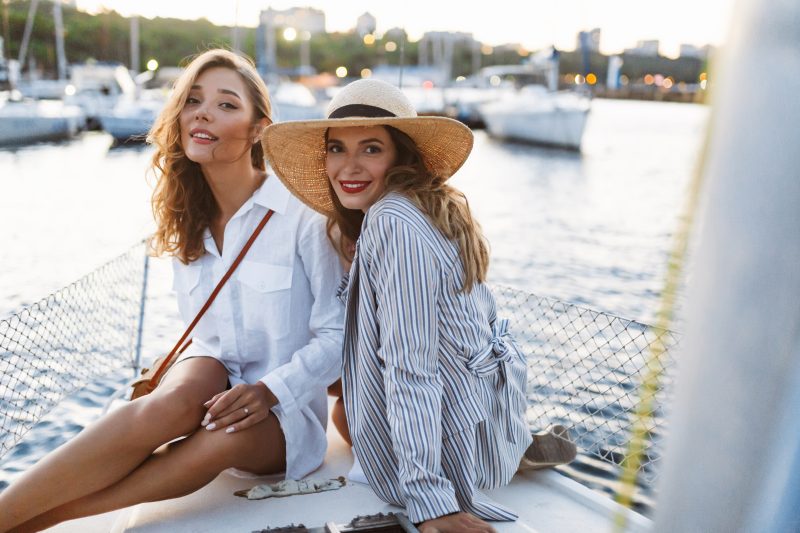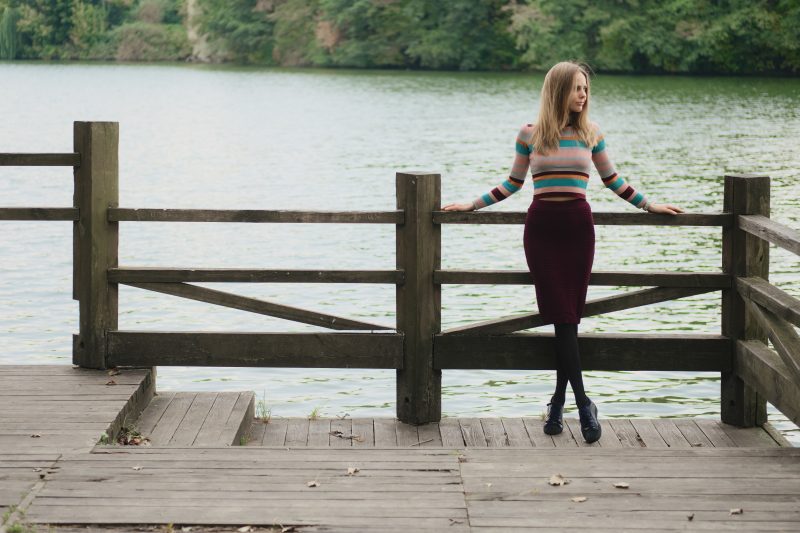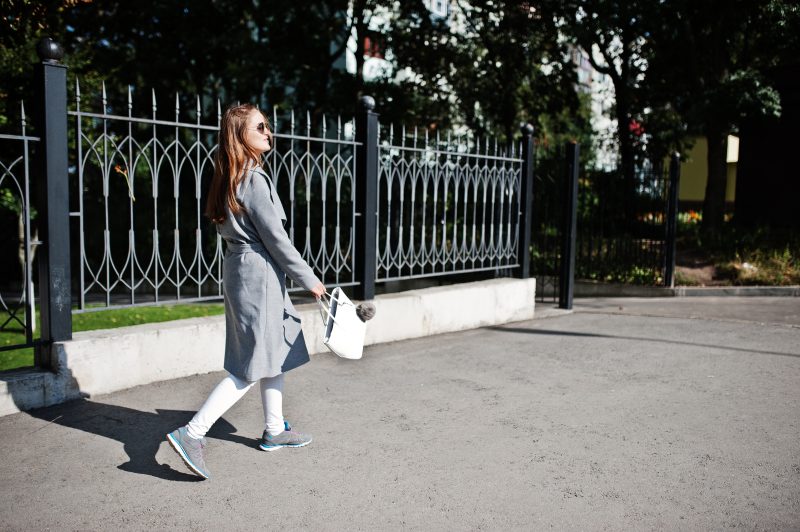So I’m wandering around Whitstable last weekend – you know how it is, you say you’re going for the oysters but really you end up doing that thing where you methodically hit every single shop on the high street. From the posh places selling bits of driftwood for like £200 to those completely mental gift shops where everything smells like strawberry rock and there’s about seventeen different types of plastic windmill spinning in the doorway.
I’m with my friend Sasha, right? She’s a stylist, works with Vogue, the whole thing. People literally stop her on the street sometimes to photograph what she’s wearing because her style is just… effortless in that way that makes the rest of us want to burn our wardrobes. So you’d think someone like that would take one look at a shop selling tea towels with cartoon crabs and run screaming. Wrong. So very wrong.
“Oh my GOD we have to go in here,” she practically shrieks, dragging me toward this absolutely lurid shopfront guarded by an army of plastic seagulls. I’m talking proper tourist trap territory – shelves groaning under the weight of items with the town name in swirly font, rock in flavors that shouldn’t exist (prosecco rock, I ask you), and enough shell-based merchandise to stock a small aquarium. Sasha makes a beeline for the postcard rack, her Bottega bag knocking over a display of miniature lighthouses because she’s got tunnel vision for… postcards.
Twenty minutes later she emerges with two carrier bags looking like she’s just scored at a Comme des Garçons sample sale. “Look at these shell earrings!” she’s going, holding up what looked to me exactly like the sort of thing I used to bring back from family holidays in Devon when I was eight. “And these tea towels – they’re so kitsch but the colors are incredible. Oh, and this mug with the 1950s harbor illustration? It’s basically vintage.”
This isn’t a one-off thing either. I’ve been noticing it for years now – take any fashion person to the seaside and they’ll bypass the artisanal driftwood sculptures and head straight for what you’d assume are the style-free zones. There’s something about these temples to tourist tat that makes people with genuinely good taste go completely feral.
When I posted about this on Instagram stories, asking fashion friends to confess their seaside shop purchases, my DMs went mental. Turns out there’s this whole secret economy of industry people finding proper treasures amongst the kiss-me-quick hats and sticks of rock.
So what are they actually buying? Let me break it down for you because apparently I’ve accidentally become an expert on this very niche topic.
Fishermen’s workwear is the obvious one, isn’t it? Those proper Guernsey sweaters – you know, the ones that are knitted so tightly they could probably stop a bullet – have been fashion-approved for ages. But here’s the thing everyone misses: you can find the real deal in random hardware shops and maritime suppliers for about a tenth of what you’d pay for some designer’s “interpretation” of the same thing.
My mate Deepa – she’s a fashion editor with this incredible knitwear collection that makes me genuinely jealous – swears by this one hardware shop in Aldeburgh. She’s picked up three authentic fishermen’s sweaters there over the years. “They’re properly scratchy,” she told me over coffee last week, “like, they’ll take your skin off initially, but they get softer with age and they’re built to last decades. I wore one to Paris Fashion Week and had three people ask if it was some obscure French heritage brand.”
Then there are the canvas tote bags. Not the glittery “Life’s Better at the Beach” ones, obviously – I mean the plain, basic canvas carriers that look like they could be from COS if you squinted. My friend Jacob, who’s a menswear buyer (proper job, fancy department store, the works), has collected these from various coastal towns and uses them in rotation around London. “Perfect size, cost about five quid, and they age beautifully,” he explained. “Plus there’s something quite funny about carrying your Waitrose shop in a bag that says ‘Cromer Crab’ on it.”
Striped tops are another goldmine. Yeah, Saint Laurent will sell you a Breton stripe for £400, but the best ones often come from those unassuming harbor shops where they’re still making them for people who actually work on boats. Imani – she’s a stylist who’s properly into sustainable fashion – has this collection from different seaside towns, each with slightly different stripe widths and necklines. “The cotton’s thicker, the cut’s more generous, they’re made for practicality not Instagram,” she said. “I’ve got one from this tiny St Ives shop that I’ve been wearing for eight years and it still looks better than designer versions I’ve tried.”
This is where it gets properly weird though – the accessories. Remember those shell earrings Sasha was losing her mind over? They ended up in an editorial she styled for an independent magazine, paired with this crisp white shirt and minimal makeup, and they looked… actually quite chic? The trick is in the styling, apparently. Context is everything.
Enamelware is having a proper moment too. Those sturdy metal mugs and plates with nautical stripes weren’t designed as style statements, but they’ve developed this cult following among people with good taste. My editor Sophie has an entire shelf of enamel mugs from harbor shops around Britain. “They’re practical, they cost about six pounds instead of sixty, and they’ve got this unpretentious charm that expensive designer homeware usually lacks,” she explained at dinner last month. Fair point.
Vintage postcards and seaside ephemera might sound random, but several people mentioned collecting these as inspiration or cheap artwork. One designer I know has framed a collection of 1960s Blackpool postcards in her studio – the saturated colors and retro typography are informing her latest prints. Another uses vintage seaside posters as Zoom backgrounds, which is quite clever actually.
Beach towels are possibly the most surprising category. Not the microfiber ones with garish designs, but the simple striped cotton towels that haven’t changed since about 1950. These have found a second life as picnic blankets, sofa throws, even wall art. Tomas, this fashion photographer whose East London flat gets featured in magazines, has vintage beach towels hung as art in his bathroom. “They’re graphic, colorful, they reference British seaside culture in a way that feels both nostalgic and contemporary,” he told me. “Plus twenty quid for large-scale artwork is a bargain.”
Proper weather gear is another category worth knowing about. I’m talking about clothes designed for people who actually work on water, not just pose near it. Traditional oilskins, sou’westers, waterproof smocks – they have this functional authenticity that expensive designer rainwear tries so hard to copy. My friend Priya found this perfect yellow fisherman’s jacket in a marine shop in Whitby four years ago. Forty-five pounds for something that looks remarkably similar to designer versions selling for ten times that. “It’s properly waterproof,” she said, “not fashion waterproof. It’ll keep you dry in actual rain, not just a light drizzle.”
I think there’s something deeper going on here about why fashion people – who theoretically have access to the most current, sophisticated design – are drawn to these unsophisticated seaside purchases. It’s about authenticity, isn’t it? These items haven’t been designed by committee or focus-grouped to death. They exist because they serve a purpose and they’ve often remained unchanged for decades. There’s an honesty to them that feels refreshing when everything else has been calculated for maximum Instagram appeal.
There’s also the thrill of the unexpected find. In an industry where products are increasingly discovered through algorithms and targeted ads, there’s something particularly satisfying about stumbling across something brilliant in a context where you weren’t looking for it.
Of course, not everything passes the test. For every perfectly proportioned striped top, there are a hundred polyester tea towels and garish plastic souvenirs. The key, according to my seaside-shopping friends, is looking with an open mind but keeping your standards high. Ask yourself: Is this actually well-designed or am I just drunk on sea air and holiday nostalgia? Would I use this back in real life or will it sit in a drawer once I’m back to reality?
I’ve developed my own habits over the years. I’ve got striped tops from various harbor towns that basically form the backbone of my weekend wardrobe. My kitchen’s full of enamel mugs from Southwold, Whitstable, St Ives – each one reminds me of a specific trip. And yes, fine, I own a shell-decorated mirror from a shop in Margate that hangs in my bathroom and gets more compliments from design-conscious visitors than pieces that cost substantially more.
The real test came last summer when I hosted dinner for several senior fashion editors. As I served coffee in my mismatched collection of seaside enamel mugs, one editor – known for having particularly exacting taste – asked where they were from. I explained their humble origins, expecting maybe a polite nod. Instead, she immediately asked for the exact shop in Whitstable where I’d found the blue striped one. “I’m going there next weekend,” she said, pulling out her phone to make notes. “I’ve been looking for exactly that type of mug forever.”
So there you have it. Fashion can be found in the most unlikely places – even next to the candy floss and plastic seagulls. You just need to know what you’re looking for, and maybe be prepared to dig through a fair amount of tourist tat to find the good stuff. But when you do find it? It’s often better than anything you could buy on the high street.



